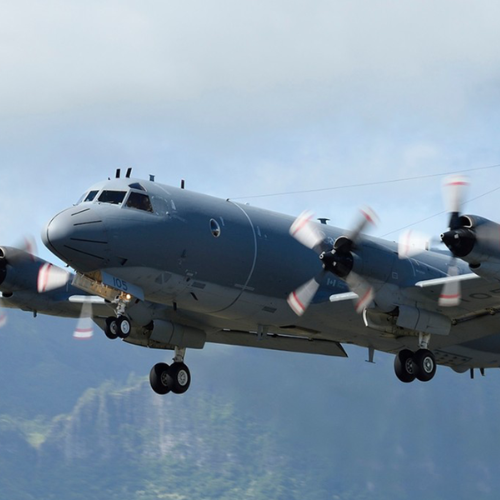Canada is once again sending one of its special aircraft to watch the seas near North Korea. This time, the patrol plane will be based in Japan, at the Kadena Air Base located in Okinawa. The mission will begin in late April and continue through mid-May. The goal of this mission is to look out for illegal ship activities connected to North Korea.
The aircraft being sent is called the CP-140 Aurora. It is a long-range patrol plane used to watch the oceans and skies. Canada will use this aircraft to check if North Korea is breaking United Nations (U.N.) rules. These rules stop North Korea from getting supplies that could help them build dangerous weapons, including nuclear bombs and missiles.
Some ships try to sneak supplies to North Korea at sea. They meet other ships and transfer goods in secret. These transfers are not allowed, and countries like Canada and Japan want to stop them. Canada’s plane will watch the ocean for any signs of these illegal ship-to-ship transfers.
Japan is working closely with Canada and other countries to make sure these U.N. rules are followed. Japan’s government said it supports Canada’s efforts and believes working together is the best way to keep the world safe. This operation is part of a bigger plan to make sure North Korea stops making dangerous weapons.
F-35 Fighter Jet Becomes $2 Trillion Disaster as Allies Abandon Costly Jet Amid Broken Promises
A History of Watch Missions and Tensions
Canada’s current mission is part of what it calls Operation Neon. This is Canada’s way of helping the world check if North Korea is obeying the U.N. rules. Since 2018, Canada has sent aircraft for this operation 13 times. It has also sent navy ships 11 times for the same purpose.
But not everyone is happy about these missions. North Korea often gets angry when other countries watch its actions. In the past, it has said these patrols are unfair and part of a U.S.-led effort to hurt it. North Korea doesn’t recognize the U.N. rules and believes these flights are a threat.
Last year in May, when Canada sent the same kind of aircraft to Japan, North Korea reacted strongly. It accused Canada of following orders from the U.S. and said it would respond with “necessary measures.” Again in October 2023, when Canada flew its CP-140 aircraft over the Yellow Sea, North Korea said the mission was disturbing peace in the region.
But it’s not just North Korea. China has also had problems with these patrol flights. During Canada’s October 2023 mission, a Chinese military jet came very close to the Canadian aircraft. It even fired flares and flew just 16 feet away—closer than a bus length. China said the Canadian plane had entered its airspace, but Canada said its aircraft was flying in international waters and had every right to be there.
This wasn’t the first time. Back in June 2022, Canada also said that Chinese jets were bothering its patrol aircraft. China denied doing anything wrong and accused Canada of causing trouble by flying near its borders.
Mexican Cartel La Nueva Familia Michoacana Caught in U.S. Sanctions Storm
What the Mission Aims to Do
The job of the CP-140 Aurora is to fly over the sea and look for ships doing things they shouldn’t be doing. These include transferring fuel or supplies to North Korean ships in secret, which breaks international rules. The aircraft uses special tools and cameras to spot these illegal moves from high in the sky.
The patrols are not meant to attack or chase anyone. They are just meant to gather information and keep an eye on the area. When something suspicious is found, the information is shared with the U.N. and other countries helping with the mission. This helps make sure that North Korea can’t secretly get the things it needs to continue building weapons.
Japan’s government says it welcomes Canada’s help. Both countries believe that by working together, they can help make the region—and the world—a little safer. Even though the mission is peaceful, it often leads to strong reactions from countries like North Korea and China, who don’t like being watched.
Still, Canada continues to take part in these patrols, showing that it is serious about making sure rules are followed at sea. With this latest mission, Canada adds another chapter to its long-running efforts to support global peace and security through Operation Neon.


